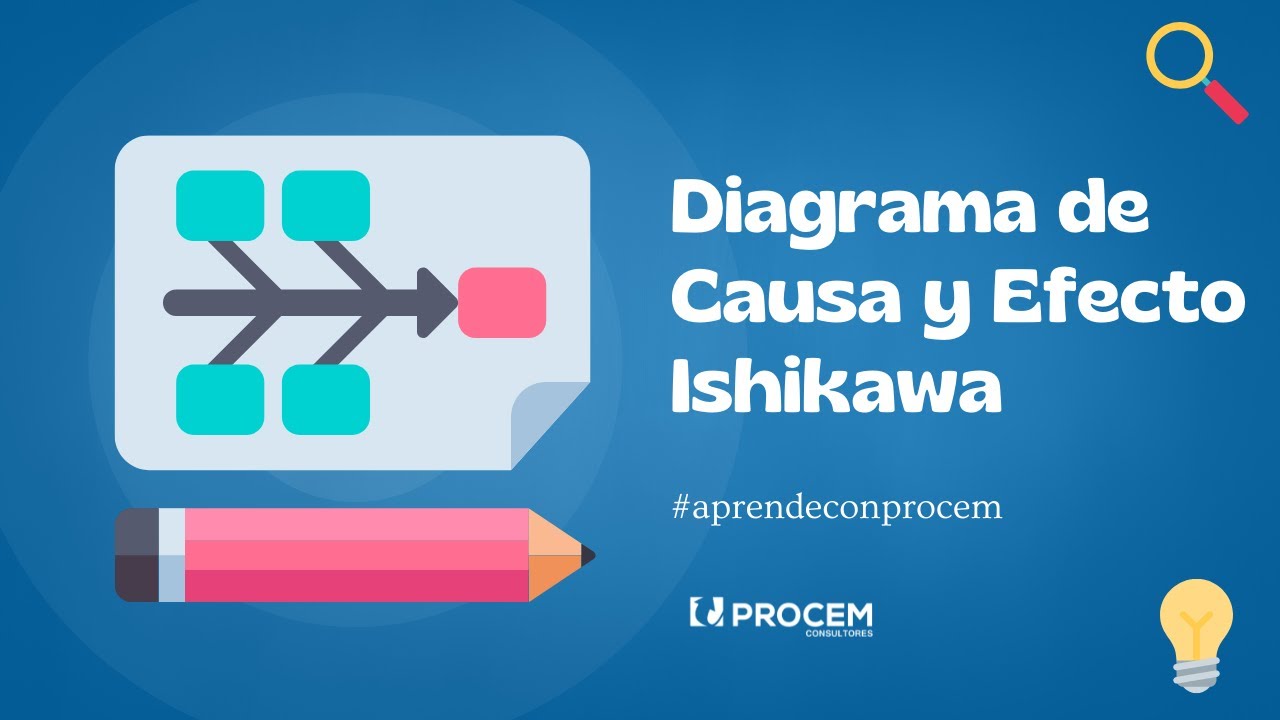Diagrama de Ishikawa 🐟 - Cómo hacer un diagrama de Ishikawa - Diagrama de CAUSA y EFECTO 👌👌
Summary
TLDREste video presenta una herramienta efectiva llamada diagrama de Ishikawa para detectar la causa raíz de problemas. Desarrollado por Kaoru Ishikawa, el diagrama es una representación de la relación causa-efecto que se aplica en diversos sectores. El video ofrece una visión teórica seguida de un ejemplo práctico, enfocándose en el exceso de desperdicio de consumibles en un almacén. Se sugiere formar un equipo multidisciplinario para analizar y aplicar técnicas como el 'por qué' para identificar las causas fundamentales del problema, proporcionando un enfoque sistemático para abordar mejoras en procesos.
Takeaways
- 📚 El diagrama de Ishikawa fue desarrollado por el doctor Kaoru Ishikawa, un químico industrial japonés conocido como el padre del análisis científico de problemas industriales.
- 🔍 Originalmente diseñado para empresas industriales, el diagrama de Ishikawa se ha extendido a diversas industrias y negocios, mostrando su utilidad más allá de su contexto original.
- 🐟 El diagrama se llama 'fishbone' o 'esqueleto de pescado' debido a su forma que representa las causas principales (huesos) que conducen al problema (cabeza del pescado).
- 📉 Es una herramienta causal que muestra la relación causa-efecto, buscando identificar las causas que originan un problema específico, construyéndolo de derecha a izquierda.
- 👥 Se recomienda utilizar el diagrama de Ishikawa en un equipo multidisciplinario, integrando diferentes perspectivas para analizar el problema desde diversas áreas.
- 📈 El primer paso para utilizar el diagrama es definir el problema claramente y ubicarlo en el lado derecho del diagrama, seguido de un análisis estructurado.
- 🔨 Se utilizan cuatro categorías principales para identificar causas: método, maquinaria, mano de obra y ambiente, conocidas colectivamente como los 'cuatro M's.
- 🤔 La técnica del 'por qué' es fundamental para profundizar en las causas, preguntando repetidamente por qué hasta llegar a una causa raíz que sea abordable y específica.
- 📝 Es importante registrar las causas identificadas en líneas horizontales debajo de cada categoría, lo que ayuda a visualizar y organizar la información.
- 🔑 El diagrama de Ishikawa por sí solo no es suficiente para resolver un problema; es una herramienta que requiere de otras metodologías para analizar y priorizar las causas raíz identificadas.
- 👉 El siguiente paso después de construir el diagrama es utilizar técnicas adicionales para determinar y abordar la causa raíz del problema, lo que se explorará en futuras videos.
Q & A
¿Qué es el diagrama de Ishikawa y qué propósito sirve?
-El diagrama de Ishikawa es una herramienta causal utilizada para identificar las causas fundamentales de un problema. Muestra la relación entre la causa y el efecto y es especialmente útil en el análisis de problemas en procesos industriales y otros tipos de industrias.
¿Quién desarrolló el diagrama de Ishikawa?
-El diagrama de Ishikawa fue desarrollado por el doctor Kaoru Ishikawa, un experto químico industrial japonés conocido como el padre del análisis científico de los problemas industriales.
¿Cómo se aplica el diagrama de Ishikawa en diferentes industrias?
-Aunque inicialmente fue conceptualizado para empresas industriales, su uso se ha extendido a lo largo de los años a todo tipo de industrias, ya que la metodología se puede aplicar indistintamente del sector en el que se utilice.
¿Cuál es la estructura básica del diagrama de Ishikawa?
-La estructura básica del diagrama de Ishikawa incluye escribir el problema en el lado derecho, dibujar una línea horizontal a la izquierda y luego dibujar líneas diagonales que representan las categorías de las causas potenciales.
¿Cuáles son las cuatro categorías más utilizadas en el diagrama de Ishikawa?
-Las cuatro categorías más utilizadas son el método, la maquinaria, las personas y el ambiente. Estas categorías se conocen como los cuatro 'emes' y son fundamentales para analizar las causas de un problema.
¿Cómo se construye el diagrama de Ishikawa paso a paso?
-Se comienza escribiendo el problema en el lado derecho, se dibuja una línea horizontal y luego se trazan líneas diagonales para las categorías de causas. Luego, se utilizan líneas horizontales pequeñas para escribir las causas propuestas en un proceso de brainstorming multidisciplinario.
¿Qué técnica se puede usar para analizar las causas en el diagrama de Ishikawa?
-Se puede utilizar la técnica del 'por qué' (5 Whys), donde se hace una pregunta y se responde con una razón, y se repite el proceso para profundizar en la causa fundamental del problema.
¿Por qué es importante formar un equipo multidisciplinario para trabajar con el diagrama de Ishikawa?
-Formar un equipo multidisciplinario es importante porque permite incluir diferentes perspectivas y conocimientos, lo que enriquece el análisis y ayuda a identificar las causas fundamentales de manera más efectiva.
¿Cómo se pueden determinar las causas fundamentales una vez que se han construido el diagrama de Ishikawa?
-Después de construir el diagrama, se pueden utilizar técnicas adicionales como la matriz de priorización o el análisis de la fuerza de causa para determinar cuál de las causas identificadas es la más significativa y debe ser abordada primero.
¿Cuál es el siguiente paso después de construir el diagrama de Ishikawa?
-El siguiente paso es analizar las causas identificadas y utilizar otras metodologías para determinar la causa fundamental y desarrollar una solución efectiva para abordar el problema.
Outlines

This section is available to paid users only. Please upgrade to access this part.
Upgrade NowMindmap

This section is available to paid users only. Please upgrade to access this part.
Upgrade NowKeywords

This section is available to paid users only. Please upgrade to access this part.
Upgrade NowHighlights

This section is available to paid users only. Please upgrade to access this part.
Upgrade NowTranscripts

This section is available to paid users only. Please upgrade to access this part.
Upgrade Now5.0 / 5 (0 votes)






